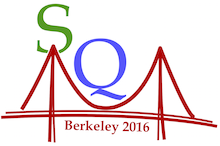Speaker
Rudolph Hwa
(University of Oregon)
Description
The data on the $p_T$ spectra of $\phi$ and $\Omega$ at LHC can be replotted in a way that shows exponential behavior up to $p_T=6$ GeV/c with the same slope for both particles and for nearly all centralities. They are empirical properties without any theoretical input. Such behaviors for $\phi$ and $\Omega$ are intriguing because of the ambiguity of the origin of the underlying strange quarks over such a wide range of $p_T$. Are they thermal (thus exponential) or shower partons (with high $p_T$ due to jets)? We give arguments that show how natural it is to explain the phenomenon by the recombination model. From the centrality dependence and from similar behavior at RHIC it is further inferred that the strange quarks are among the enhanced thermal partons that give rise to ridge correlated to minijets. It is expected that if the $\phi$ or $\Omega$ produced at LHC is used as trigger there are associated particles that can be observed on the near side even though the strange quarks are characterized by thermal distribution.
| On behalf of collaboration: | None |
|---|
Author
Rudolph Hwa
(University of Oregon)
